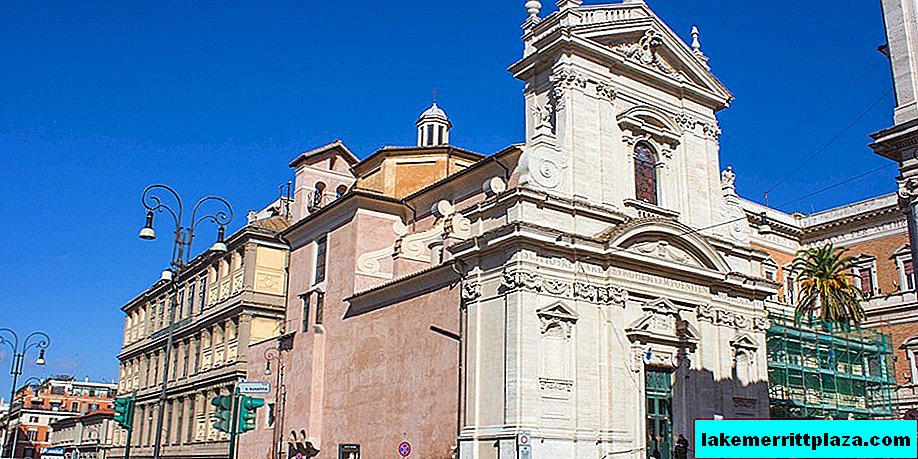Most Italian meat products are cooked from pork. But, as you know, from every rule there is at least one exception. In the list of dishes far from the vegetarian table, Bresaola stands apart from its "counterparts". She is beef jerky. In some northern regions of Italy, there are still versions of venison and horsemeat. But despite this, according to Istituto Valorizzazione Salumi Italiani, Bresaola - the only type of Italian sausage, which is prepared only from cow meat. To reveal all the secrets and find out the recipe for its preparation at home, our article will help you.
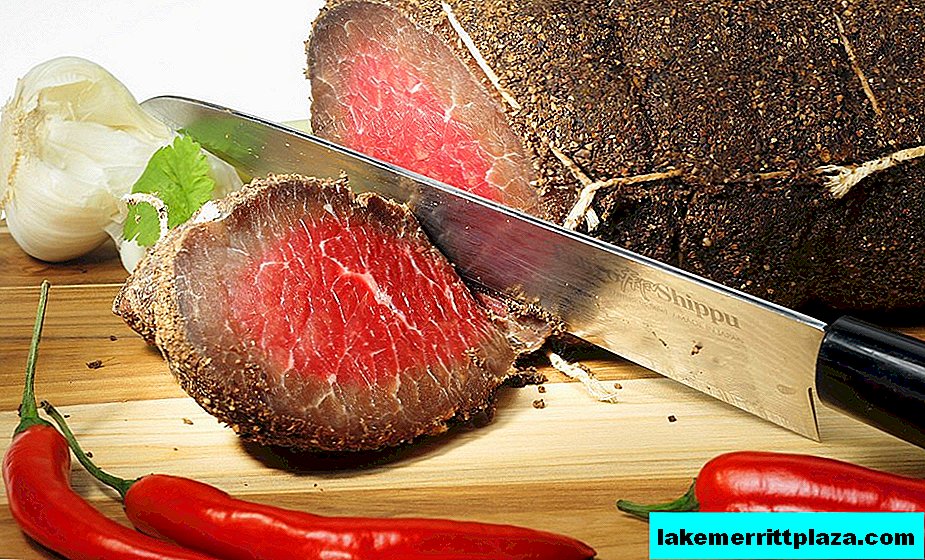
Story
The start of the history of Bresaola goes far back centuries. It is believed that she was born with the first methods of preserving the meat of wild animals through salting and drying.
The term "bresaola" probably comes from the Latin "brasaula", which means "salted, fried meat", because the initial stages of drying took place in rooms heated with fire.
The first documentary evidence of dried beef cooking dates back to the 15th century. But until the 19th century, her recipe did not go beyond family meals. And only with the development of the industry, the production of bresaola becomes large-scale. The product crosses the borders of Italy and is exported to Switzerland.
In 1996, Bresaola della Valtellina was assigned the Protected Geographical Name (IGP) as a distinguishing mark that emphasizes the unsurpassed quality of the product.
Description
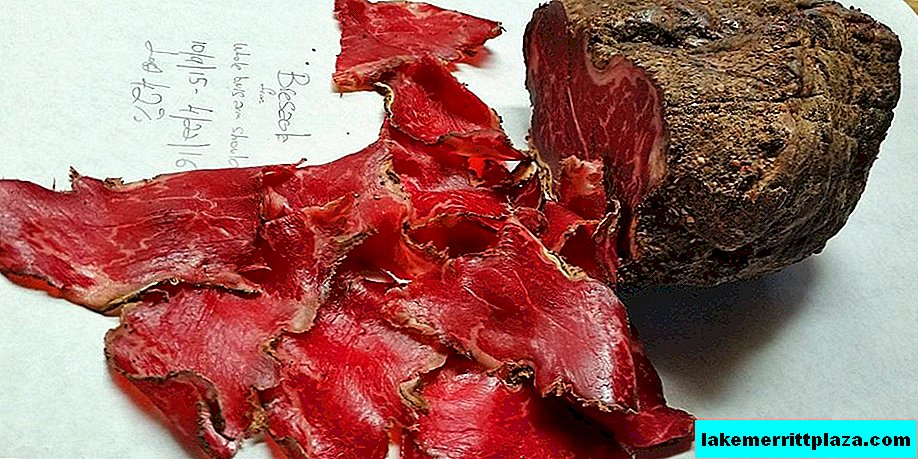
Bresaola is a dried beef. In its finished form, it has a cylindrical shape, a dark red color and a spicy-meat aroma. Perhaps a slight marbling in the form of thin white veins of fat. The taste is moderately salty.
Bresaola della Valtellina is an example of quality in an extensive family of beef delicacies. Let's take a closer look at how it is prepared on an industrial scale.
Industrial production
For the manufacture of the product use only the muscles of the front and hind limbs. All raw materials are carefully selected. This is a prerequisite for a quality product. Then specialists trim the excess fat and tendons without affecting the flesh.
The second stage is dry salting. Pieces of meat in vats sprinkled with salt and spices. Wine, sugar, scanty amounts of nitrites or sodium or potassium nitrates are allowed. Each firm keeps secret the proportion of spices. Therefore, the taste and smell of the delicacy varies from manufacturer to manufacturer.
The stage of salting lasts at least 10 days and ends with a kind of "massage", which contributes to the uniform penetration of salt into the muscle tissue.
Then the future bresaola washed from excess salt is placed in a natural or artificial shell and sent for drying. The first week there is an intensive dehydration of the product at an air temperature of 20-30 degrees.
Further ripening is carried out at a temperature of 12-18 degrees for 4-8 weeks. The production rules prohibit the use of accelerated aging methods for meat products.
Ready bresaola is sold in whole or by weight, as well as in the form of slices in a vacuum package.
Non-traditional species
In some regions of Italy produce unconventional types of delicacy:
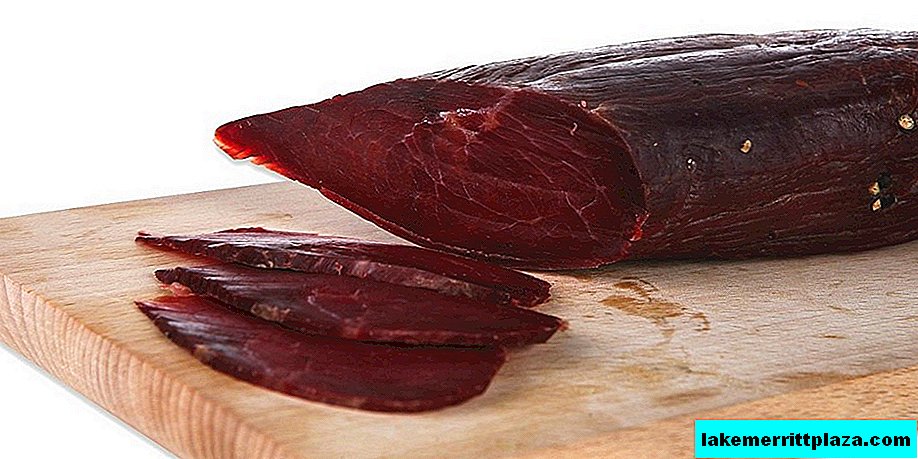
- Bresaola di cavallo - horse meat bresaola. A characteristic product of the provinces of Asti (Asti) and the Veneto region. The meat of the femoral part of the animal without fat and tendons is used.
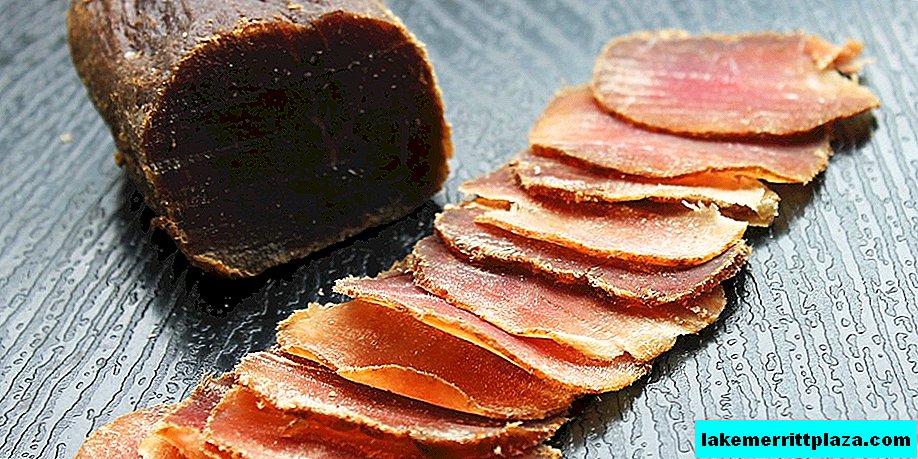
- Bresaola di cervo - venison bresaola. Typical of the city of Novara. They make it from the femoral or brachial muscle of deer. Raw materials are pickled in brine based on red wine. The stages of drying and ripening are similar to the method of manufacturing a traditional product.
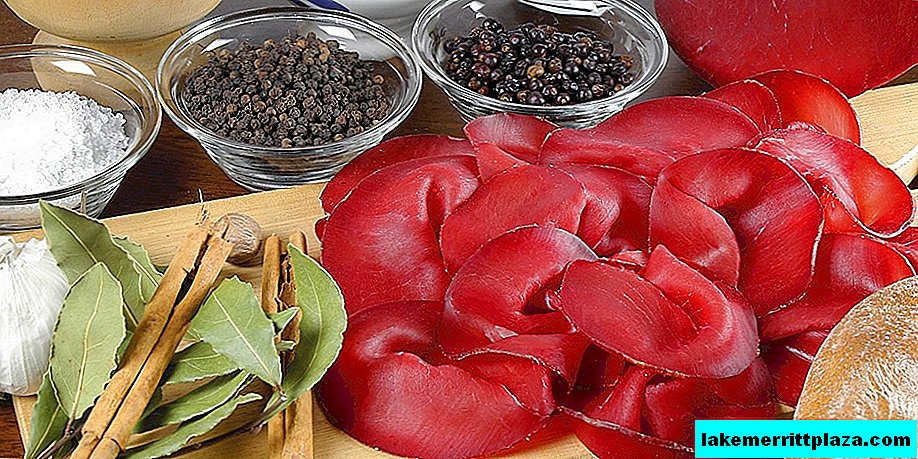
- Bresaola affumicata - smoked beef from the province of Sondrio (Sondrio). After the maturation of the delicacy, the process of smoking with pine wood takes place.
How and what to eat
Bresaola is a sophisticated product and requires a special approach to tasting. The thickness of the slices should be no more than 0.8 mm. Only in this way is it possible to appreciate the softness and aroma of the delicacy. It is recommended to chew it slowly with your mouth closed. So your tongue will perceive all the subtleties of jerky beef.
Serve sliced bresaola slightly chilled or room temperature. They eat it on their own, as well as sprinkled with olive oil, lemon juice or balsamic vinegar.
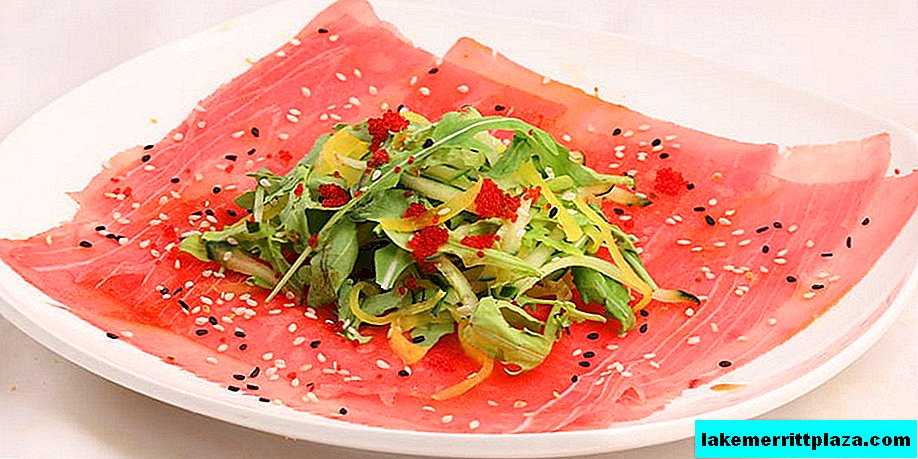
Italian housewives are happy to use bresaola as a component of many dishes. It fits perfectly with the sandwiches. They make excellent carpaccio out of it. It harmonizes perfectly with legumes, vegetables (arugula, tomatoes, bell peppers, zucchini), fruits (figs, pears, pomegranates, black grapes) and Parmesan cheese.
The right drink for a couple with bresaola is fragrant white wine, which fully reveals all the spicy notes of the product.
Homemade recipe
Bresaola is one of the few meat dishes that has virtually no contraindications.
You do not have the opportunity to buy a quality Italian product? Do you doubt the reliability of modern manufacturers? Then try cooking your beef jerky at home.
In order for you to get about 700-800 g of bresaola in the final, you will need 1 kg of meat. During cooking, it loses about 30% of the weight due to dehydration. It is important that the raw materials should not contain fat and tendons.
So, the required ingredients:
- Beef (hip or shoulder blade) - 1 kg;
- Salt - 200 g;
- Sugar - 200 g;
- Rosemary, black pepper, sweet paprika - to taste.
To begin with, we give the meat a cylindrical shape with a knife, unless, of course, the beef of your choice no longer resembles a cylinder. Then mix salt, sugar and chopped rosemary.
Rinse the washed and dried beef with twine or rubber bands and cover with a salt-spicy mixture, rubbing it thoroughly. As a result, the meat should be completely covered with adherent crystals.
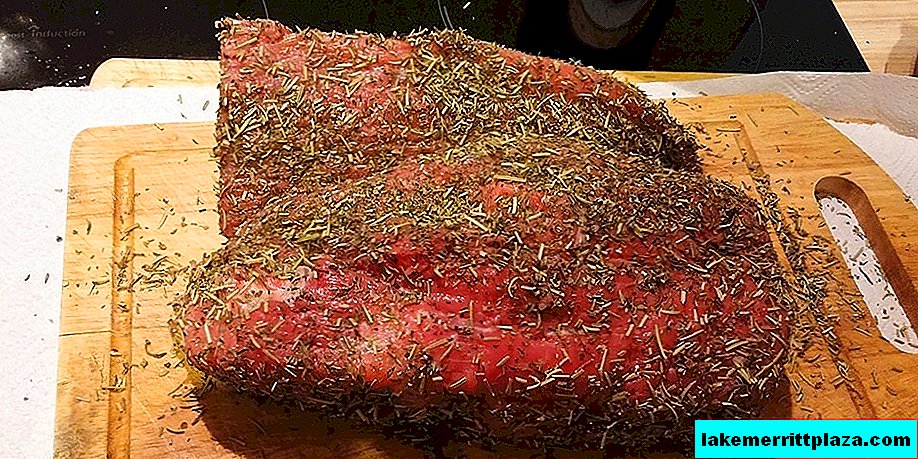
We put the future bresaol in a container with holes at the bottom and put it in the refrigerator, substituting something to collect the draining liquid. After 24 hours, drain the resulting water and rub the meat again with a mixture of salt and seasoning. Repeat this operation several times during the week.
After 7 days, we wash the beef from excess spices with cold water or dry white wine. Then dry with a paper towel and rub with a mixture of paprika and black pepper. You can add salt to the seasonings again, but in an amount not exceeding 1 g per 100 g of meat.
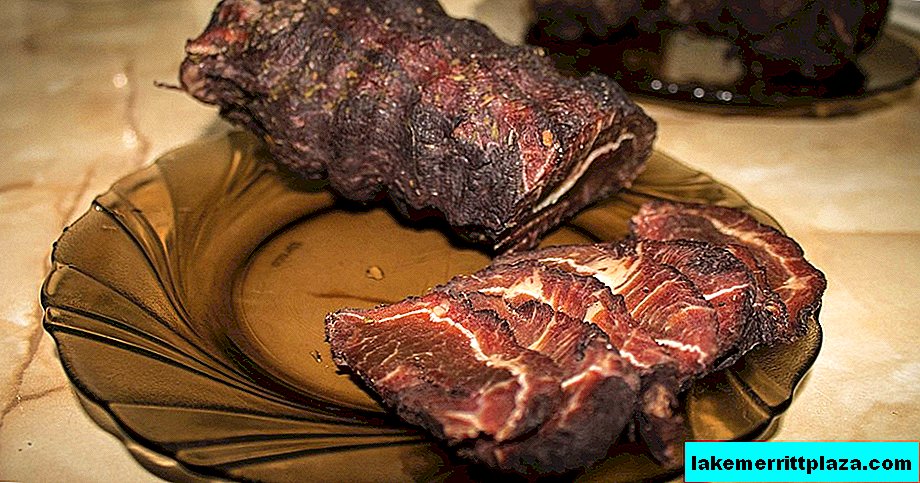
Wrap the cake mix with a cotton cloth or paper towel and place it in the refrigerator on the wire rack for about 30 days. In this case, the first week we change the tissue every 2-3 days, and the remaining exposure time - after 7-6 days, so that the excess fluid is removed as much as possible.
If after a month the beef has dried well enough, then the product is ready to eat.
We cut the home-made bresaola into thin slices and enjoy an excellent combination of taste and benefit.
Calorie content and benefits
It is not true that all sausages are unhealthy. Bresaola, despite belonging to the category, fully refutes this assertion. 100 g of product contains only 151 kcal. In this case, the energy value consists of:
- Proteins - 32 g;
- Fats - 2.6 g;
- Carbohydrates - 0 g.
Unlike most sausages, bresaol contains a minimal amount of fat. This fact makes it an excellent product for people who follow low-calorie diets, as well as for those who suffer from high cholesterol.
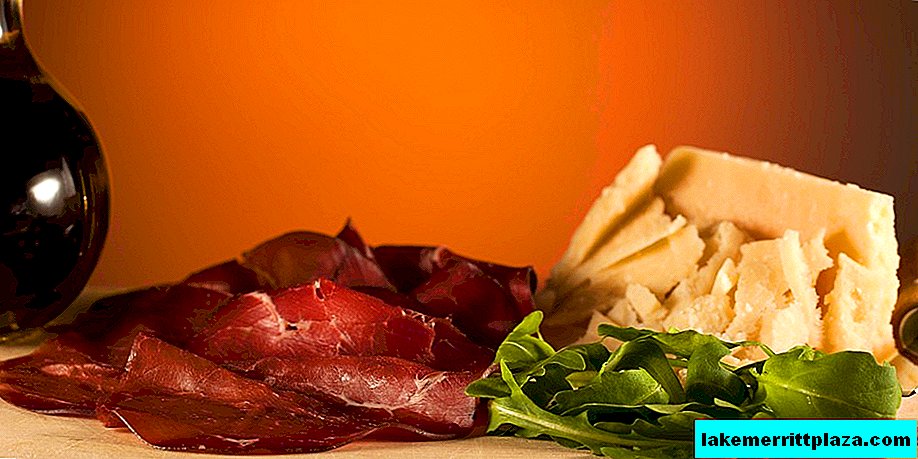
Jerky beef is very rich in proteins with high biological value. Therefore, it often acts as a component of the diets of athletes and losing weight.
Of the minerals, Bresaul contains a significant amount of iron (in 100 g 30% of the daily value). It is recommended as a product for the prevention of anemia.
The presence of potassium (10.74% DN) and phosphorus (24% DN) favorably affects the maintenance of healthy bone tissue. And B vitamins contribute to the proper functioning of the nervous system and metabolic processes.
Perhaps the only contraindication to the use of bresaola will be hypertension.
By the product, which contains a significant amount of sodium chloride, it can lead to fluid retention in the body and to increase blood pressure.
Price in Italy and in Russia
Each exquisite product has an equally exquisite price. Dried beef is no exception. The price of Bresaola della Valtellina IGP in Italy is an average of 45 Euro per 1 kg.
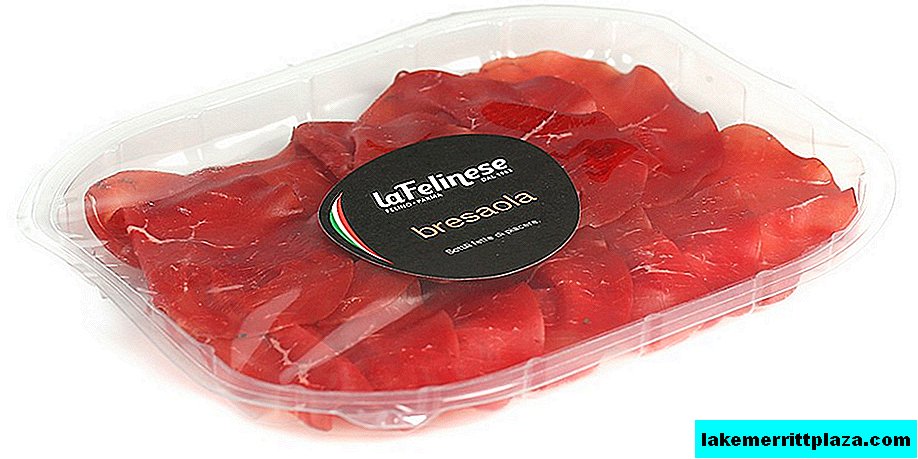
The cost of bresaola with a quality category on Russian shelves ranges from 360 to 480 rubles for 70 g of sliced in vacuum packaging.
The story of an Italian product with a taste of harmony is complete. Want to eat healthy without feeling eaten calories? Do not go past the bresaola counters. Especially if these counters are located somewhere in Italy. Live together and read a lot, and everything else will follow!



